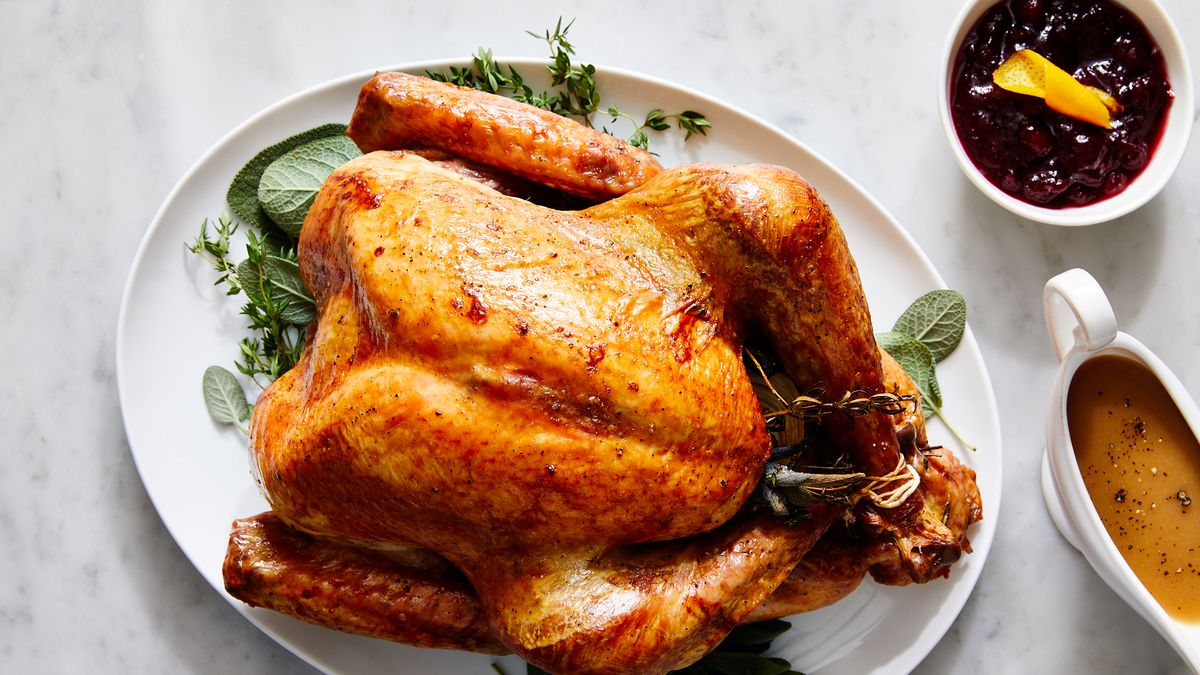

Articles
How To Store Turkey After It’S Cooked
Modified: February 24, 2024
Learn the best methods for storing cooked turkey to keep it fresh and flavorful. Read our informative articles for expert tips and tricks.
(Many of the links in this article redirect to a specific reviewed product. Your purchase of these products through affiliate links helps to generate commission for Storables.com, at no extra cost. Learn more)
Proper Storage Techniques for Cooked Turkey
After enjoying a delicious Thanksgiving or holiday meal, you may find yourself with leftover cooked turkey. To ensure its freshness and safety, it’s important to store the turkey properly. With these simple storage techniques, you can keep your cooked turkey fresh and tasty for future meals.
Read more: How To Store Turkey Bacon After Opening
Cooling the Turkey
Before storing the cooked turkey, it’s essential to let it cool down first. Leaving the turkey at room temperature for more than 2 hours can encourage the growth of bacteria. Allow the turkey to cool on the countertop for about 30 minutes. This will prevent excessive moisture buildup during the storage process.
Removing the Turkey from the Bones
Remove all the meat from the turkey bones before storage. Shred or slice the turkey into convenient portions that can be easily reheated later. Removing the bones not only allows for easier storage but also prevents the bone from affecting the texture and flavor of the meat during storage.
Storing in the Refrigerator
If you plan to consume the leftover turkey within a couple of days, storing it in the refrigerator is the best option. Place the shredded or sliced turkey in an airtight container or wrap it tightly with aluminum foil or plastic wrap. Make sure to label the container with the date of storage to keep track of its freshness. The cooked turkey can be safely stored in the refrigerator for up to 3-4 days.
Freezing Cooked Turkey
If you want to extend the shelf life of your cooked turkey, freezing is the way to go. Wrap the turkey tightly in heavy-duty freezer bags or aluminum foil. Make sure to remove any excess air to prevent freezer burn. Alternatively, you can use vacuum-sealed freezer bags for even better preservation. Frozen cooked turkey can last up to 3-4 months in the freezer without compromising its quality.
Read more: How To Store Wine After It’S Been Opened
Reheating Stored Turkey Safely
When reheating the stored turkey, it’s crucial to do so safely to avoid foodborne illnesses. Thaw frozen turkey in the refrigerator overnight before reheating. To reheat, heat the turkey in the oven at 325°F (163°C) until it reaches an internal temperature of 165°F (74°C). You can also use a microwave on the defrost setting or a stovetop to heat the turkey. Avoid reheating the entire batch if you only need a small portion, as repeated reheating can affect the texture and taste of the turkey.
Tips for Extending the Shelf Life of Cooked Turkey
Here are some additional tips to help maximize the shelf life of your cooked turkey:
- Divide the turkey into smaller portions before storing, so you can easily thaw and use only what you need.
- Label and date the containers or freezer bags to keep track of the storage duration.
- Use airtight containers or freezer bags to prevent moisture and air from entering, which can cause freezer burn.
- Store the turkey in the coldest part of the refrigerator (usually the back) or in the freezer where the temperature is consistently below freezing.
- Do not refreeze previously frozen cooked turkey, as it can lead to loss of quality and increase the risk of foodborne illness.
By following these proper storage techniques, you can safely store your leftover cooked turkey, ensuring its freshness and deliciousness for future meals. Whether you’re planning to use it for mouthwatering sandwiches or incorporating it into flavorful casseroles, properly stored cooked turkey can be a versatile and convenient ingredient for many more tasty meals to come.
Proper Storage Techniques for Cooked Turkey
1. Cooling the Turkey
After enjoying a delicious Thanksgiving or holiday meal, it is important to properly cool the cooked turkey before storing it. Cooling the turkey properly not only helps maintain its taste and texture but also prevents the growth of harmful bacteria.
Once the turkey is cooked, remove it from the oven or grill and let it rest for about 20 minutes. This allows the natural juices to redistribute within the meat and helps retain its moisture. After the resting period, it’s time to start the cooling process.
Begin by carefully transferring the cooked turkey to a clean, heat-resistant surface. You can use a cutting board or a large platter for this purpose. Make sure to use oven mitts or heat-resistant gloves to avoid burning yourself.
Next, leave the turkey uncovered and allow it to cool at room temperature for approximately 30 minutes. This initial cooling period helps the turkey reach a safe temperature quickly and reduce the risk of bacterial growth. Additionally, it prevents excessive moisture buildup, which can lead to a soggy texture.
While cooling the turkey, try to keep it in a dry and well-ventilated area. Avoid placing it near any heat sources or in direct sunlight, as this can cause the turkey to spoil faster. If you live in a humid climate, you may want to use a gentle fan to circulate air around the turkey, but be sure to keep the fan at a safe distance to prevent contamination.
During the cooling process, monitor the internal temperature of the turkey using a food thermometer. The goal is to cool the turkey to below 40°F (4°C) within two hours, as this inhibits bacterial growth. If the turkey is still above this temperature after two hours, it is advisable to discard it to avoid foodborne illnesses.
If you’re in a hurry and need to cool the turkey faster, you can place it in the refrigerator. Ensure that the turkey is on a shallow pan or a wire rack to maximize airflow and facilitate even cooling. Remember to cover the turkey loosely or use aluminum foil to prevent it from drying out in the refrigerator.
By properly cooling the turkey before storage, you can ensure its safety and maintain its quality. The cooled turkey is now ready to be safely stored in the refrigerator or freezer until you’re ready to use it for future meals.
Proper Storage Techniques for Cooked Turkey
2. Removing the Turkey from the Bones
Once the cooked turkey has been properly cooled, the next step in ensuring its longevity and convenience is to remove the meat from the bones. This step not only makes it easier to store the turkey but also prevents the bones from affecting the taste and texture of the meat during storage.
To remove the turkey from the bones, start by placing the cooled turkey on a clean cutting board or tray. Use a sharp knife or your hands to carefully separate the meat from the bones. Begin by removing the large pieces, such as the breast and thigh meat, and then work your way to the smaller bones and joints.
As you remove the meat, try to keep it in larger, manageable portions. This will make it easier to store and reheat later. Depending on your preference, you can choose to shred the meat, slice it, or dice it into smaller pieces for added convenience.
Removing the turkey from the bones allows for better storage and ensures that the meat retains its taste and texture. The bones can sometimes add an unwanted flavor to the meat if stored together. Moreover, removing the bones makes it easier to portion out the turkey for future meals without wasting any meat or having to deal with the bones while reheating.
Once the turkey has been removed from the bones, transfer it to a clean, airtight container or wrap it tightly in aluminum foil or plastic wrap. Make sure to label the container with the date of storage to keep track of its freshness. Storing the turkey without the bones not only saves space but also helps maintain the quality and flavor of the meat.
If you prefer to have some bone-in portions of the turkey for specific recipes, you can separate those portions and store them separately from the boneless meat. This allows you to have the best of both worlds – boneless meat for easy use and bone-in portions for dishes that benefit from the added flavor.
By removing the turkey from the bones before storage, you can ensure that the meat stays fresh, flavorful, and free from any unwanted bone effects. This step sets you up for successful storage and easy meal preparation when you’re ready to enjoy your leftover cooked turkey.
Proper Storage Techniques for Cooked Turkey
3. Storing in the Refrigerator
If you plan to consume the leftover cooked turkey within a few days, storing it in the refrigerator is the most convenient and practical option. Properly storing the turkey in the refrigerator helps maintain its freshness and minimizes the risk of bacterial growth.
Here’s how you can store the cooked turkey in the refrigerator:
- Prepare the cooked turkey by removing it from the bones and cutting it into desired portions for easy serving. Ensure that the turkey is cooled down to room temperature before proceeding.
- Choose an airtight container or wrap the turkey tightly in aluminum foil or plastic wrap. This will prevent any air or moisture from getting in and causing the meat to dry out.
- If using a container, make sure it is clean and dry before placing the turkey inside. Label the container with the date of storage for easy reference.
- Store the container or wrapped turkey in the coldest part of the refrigerator, typically the back or bottom shelf. Maintaining a consistent temperature below 40°F (4°C) is crucial to preventing the growth of harmful bacteria.
- It is advisable to use the turkey within 3-4 days of refrigeration to maintain its quality and taste. Discard any turkey that shows signs of spoilage, such as an off smell, slimy texture, or unusual color.
While storing in the refrigerator, it’s important to be mindful of potential cross-contamination. Keep the turkey away from other raw or uncooked foods to prevent the spread of bacteria. Remember to practice good hygiene by washing your hands thoroughly before handling the turkey, and using clean utensils and surfaces during preparation.
If you have a large quantity of leftover turkey and know that you won’t be able to consume it within the recommended storage time, consider freezing the excess portions for longer-term storage.
Storing cooked turkey in the refrigerator allows for easy access and quick meal preparations. Whether you’re making sandwiches, salads, or incorporating the turkey into various dishes, properly stored turkey will retain its flavor and quality for a few days, giving you the flexibility to enjoy it at your convenience.
Proper Storage Techniques for Cooked Turkey
4. Freezing Cooked Turkey
If you have leftover cooked turkey that you won’t be able to consume within a few days, freezing it is a great option to extend its shelf life. Freezing cooked turkey can help maintain its taste, texture, and quality for several months, allowing you to enjoy it at a later time.
Follow these steps to properly freeze cooked turkey:
- Prepare the cooked turkey by removing it from the bones and cutting it into desired portions. Allow the turkey to cool completely before proceeding.
- Wrap the turkey tightly in plastic wrap or aluminum foil to protect it from freezer burn. Make sure to cover all exposed areas to prevent moisture loss and maintain the turkey’s juiciness.
- For added protection, place the wrapped turkey in a heavy-duty freezer bag. Squeeze out any excess air from the bag before sealing it tightly.
- Label the bag with the date of freezing to keep track of its freshness. This will help you determine its storage duration and maintain food safety.
- Place the wrapped and bagged turkey in the freezer in a flat position for optimal freezing. Make sure the turkey is not crowded and has enough space for proper air circulation.
- Keep the freezer temperature at or below 0°F (-18°C) to ensure optimal food preservation. Regularly check and maintain the freezer temperature to avoid fluctuations.
When it’s time to use the frozen cooked turkey, follow these thawing and reheating guidelines:
- Thaw the frozen turkey by transferring it from the freezer to the refrigerator. Allow it to thaw slowly in the refrigerator to prevent the growth of bacteria. Thawing times will vary depending on the size of the turkey, but as a general rule, allow approximately 24 hours for every 5 pounds of turkey.
- Once the turkey is thawed, you can safely reheat it using different methods such as oven, microwave, or stovetop. Ensure that the turkey reaches an internal temperature of 165°F (74°C) to ensure it is thoroughly heated and safe to eat.
- When reheating the turkey, it is advisable to cover it loosely with foil to prevent drying out. You can add a splash of broth or gravy to help retain moisture.
- Avoid refreezing previously thawed cooked turkey. Repeated thawing and refreezing can affect the taste, texture, and overall quality of the turkey.
By following these guidelines, you can safely freeze cooked turkey and enjoy it for an extended period. Whether you want to save it for future meals or have a ready-to-use protein option on hand, freezing cooked turkey provides convenience and helps minimize food waste.
Proper Storage Techniques for Cooked Turkey
5. Reheating Stored Turkey Safely
When it comes to reheating stored turkey, it’s important to prioritize food safety to avoid any potential risks of foodborne illnesses. By following proper reheating techniques, you can ensure that the stored turkey is heated thoroughly and safe to consume.
Here are some guidelines for reheating stored turkey safely:
- Thaw the stored turkey if it has been frozen. Transfer it from the freezer to the refrigerator and allow it to thaw slowly. This helps maintain the meat’s texture and minimizes the risk of bacterial growth.
- Divide the stored turkey into smaller portions to reheat only what you need. This allows for more even reheating and helps preserve the quality of the remaining turkey.
- Choose a suitable reheating method depending on your preferences and convenience. Common methods include using the oven, microwave, or stovetop.
- If using the oven, preheat it to 325°F (163°C). Place the turkey in a shallow baking dish or on a baking sheet and cover it loosely with aluminum foil to prevent drying out. Reheat for approximately 20-30 minutes or until the internal temperature reaches 165°F (74°C).
- When reheating in the microwave, place the turkey in a microwave-safe container and cover it with a microwave-safe lid or microwave-safe plastic wrap. Use the defrost or low power setting to avoid overheating. Stir and rotate the turkey periodically for even reheating.
- For stovetop reheating, place the turkey in a saucepan or skillet over medium-low heat. Add a splash of broth, gravy, or sauce to prevent dryness and stir occasionally until heated through.
- Regardless of the reheating method, ensure that the turkey reaches an internal temperature of 165°F (74°C) before consuming. This temperature ensures that any potential bacteria are killed and the turkey is safe to eat.
- Avoid reheating the full portion of stored turkey multiple times, as repeated heating and cooling can affect its texture and quality. Instead, reheat only the amount needed for each meal to minimize food waste and maintain the best taste.
Remember, always use separate utensils and clean surfaces to prevent cross-contamination during the reheating process. Good hygiene practices, such as washing hands thoroughly before and after handling food, are crucial for food safety.
By following these safe reheating techniques, you can enjoy your stored turkey without compromising on taste, quality, or safety. Serve the reheated turkey in your favorite recipes or enjoy it as a standalone protein for delicious meals that will bring back the flavors of your original feast.
Proper Storage Techniques for Cooked Turkey
6. Tips for Extending the Shelf Life of Cooked Turkey
To ensure that your cooked turkey stays fresh and safe for as long as possible, here are some additional tips to help you extend its shelf life:
- Divide the turkey into smaller portions before storing. This allows you to thaw and use only what you need, reducing waste and ensuring the rest of the turkey remains in optimal condition.
- Label and date the containers or freezer bags holding the stored turkey. This helps you keep track of how long it has been in storage and ensures that you use it within a safe timeframe.
- Use airtight containers or freezer bags to prevent moisture and air from entering. This helps maintain the turkey’s flavor, texture, and freshness during storage.
- Store the turkey in the coldest part of the refrigerator, typically the back, where the temperature remains consistent. This ensures that the turkey stays at a safe temperature and reduces the risk of spoilage.
- When using the refrigerator, try to consume the stored turkey within 3-4 days for the best quality and taste. After this time, the turkey may start to lose its flavor and texture.
- If you need to store the turkey for a longer period, freezing is the best option. Frozen cooked turkey can last up to 3-4 months without significant loss of quality, allowing you to enjoy it at a later time.
- When thawing frozen turkey, do so in the refrigerator overnight rather than at room temperature. This gradual thawing process helps maintain the turkey’s texture and minimizes bacterial growth.
- Avoid refreezing previously thawed cooked turkey. Each time you freeze and thaw the turkey, its quality may degrade, resulting in a less desirable taste and texture.
- Consider repurposing the cooked turkey into different dishes. By incorporating it into casseroles, soups, or salads, you can extend its usage and enjoy the flavors in new and creative ways.
- Always practice good hygiene and proper food handling techniques when handling cooked turkey. Wash hands thoroughly, use clean utensils, and keep surfaces clean to prevent cross-contamination and ensure food safety.
By following these tips, you can extend the shelf life of your cooked turkey, allowing you to savor its deliciousness for longer. Whether you choose to store it in the refrigerator or freezer, maintaining proper storage techniques and exercising caution during reheating will help preserve the quality and taste of your stored turkey.
Frequently Asked Questions about How To Store Turkey After It'S Cooked
Was this page helpful?
At Storables.com, we guarantee accurate and reliable information. Our content, validated by Expert Board Contributors, is crafted following stringent Editorial Policies. We're committed to providing you with well-researched, expert-backed insights for all your informational needs.

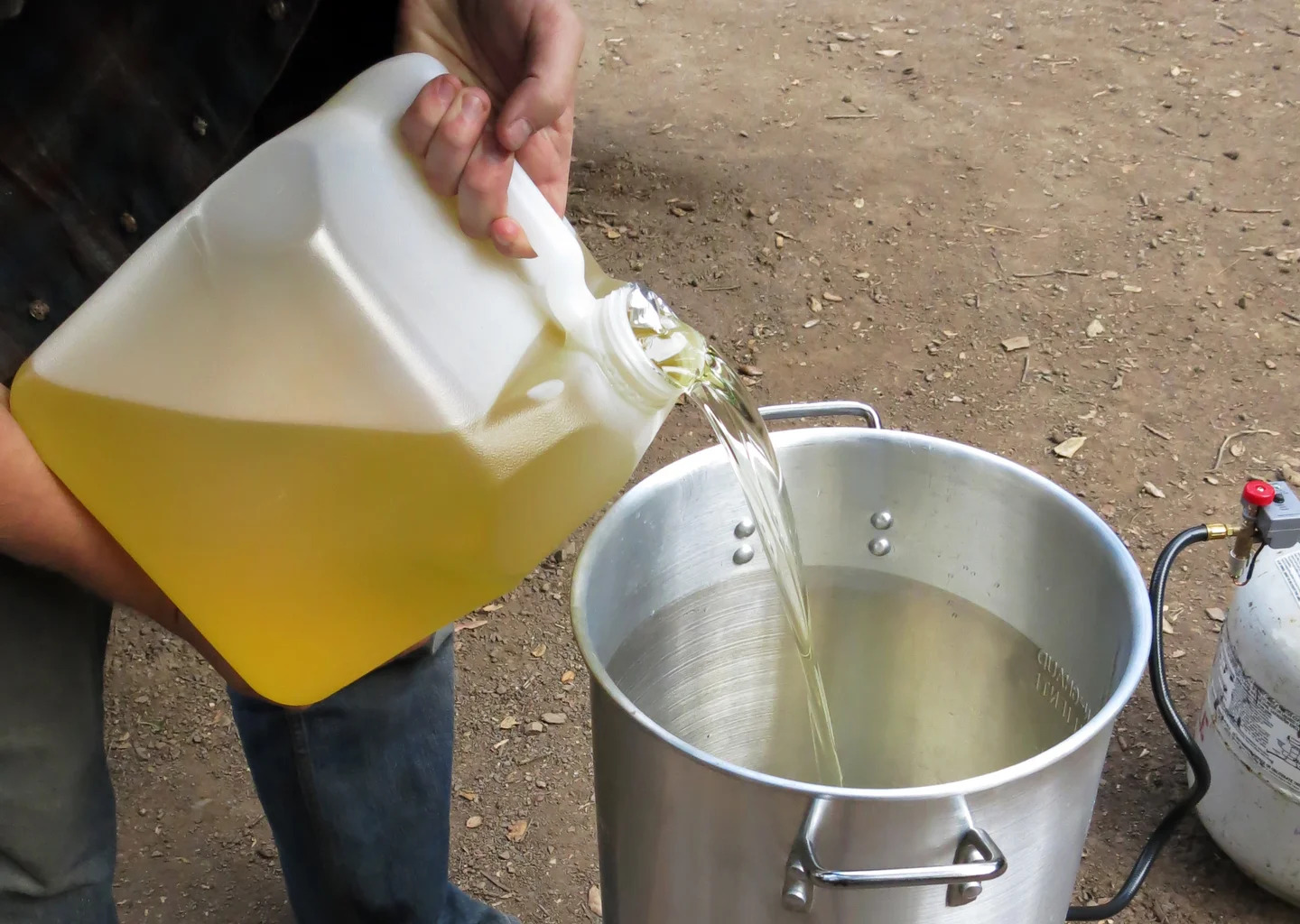
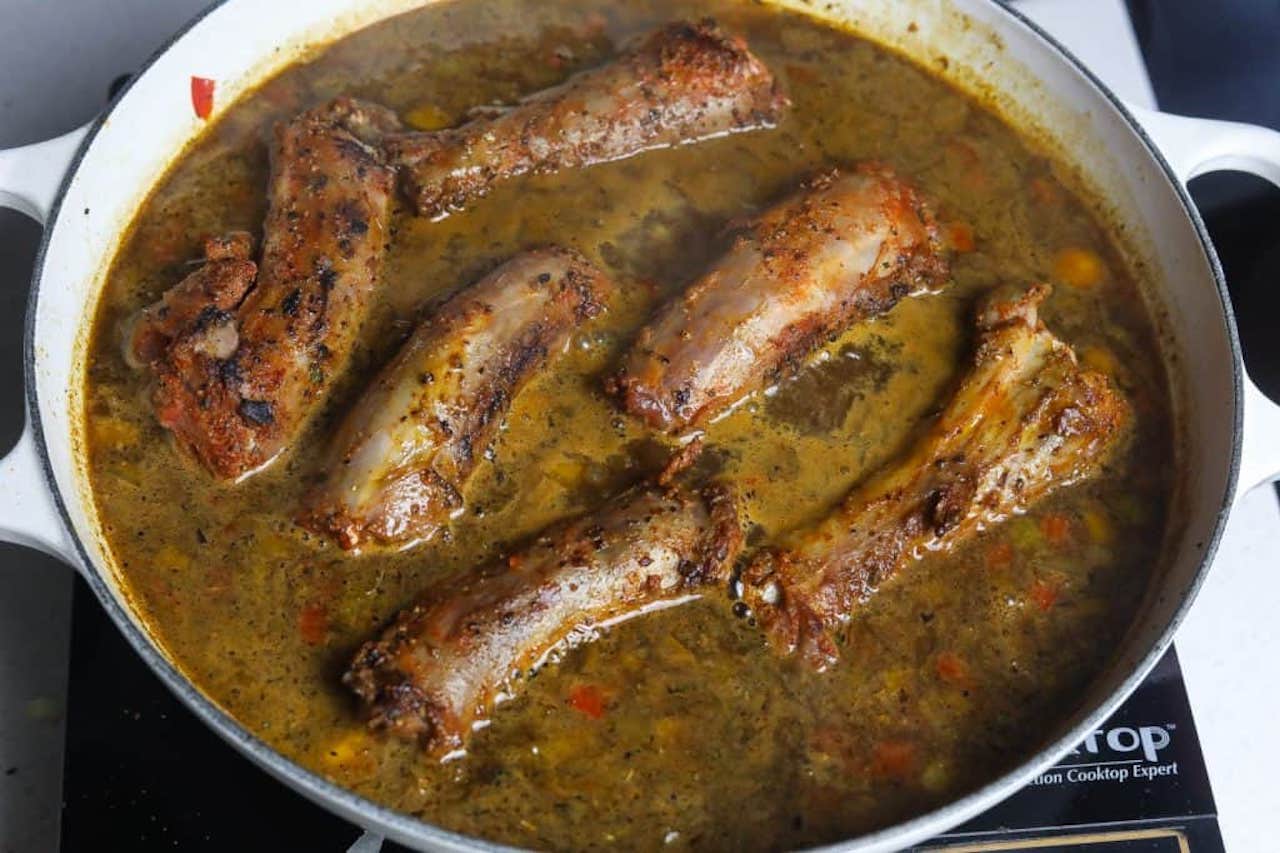
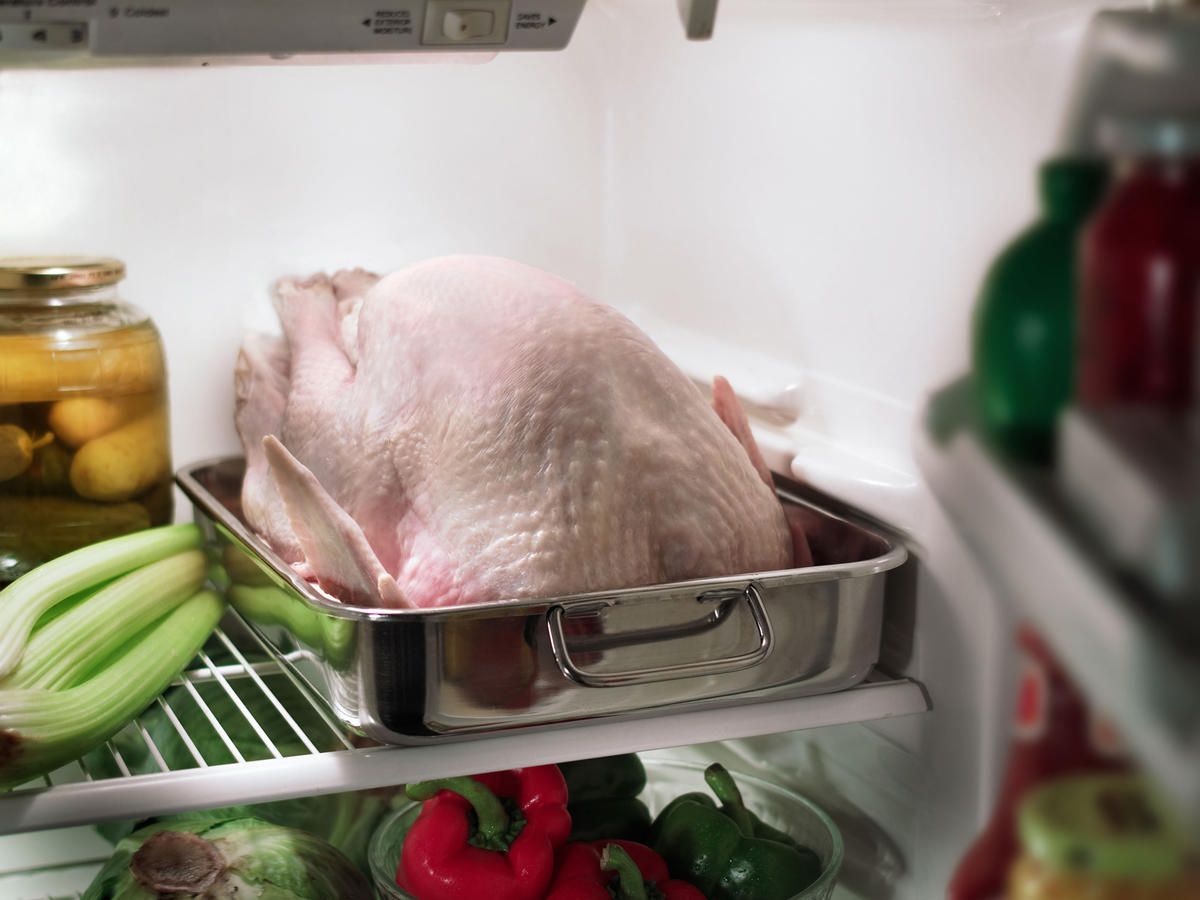
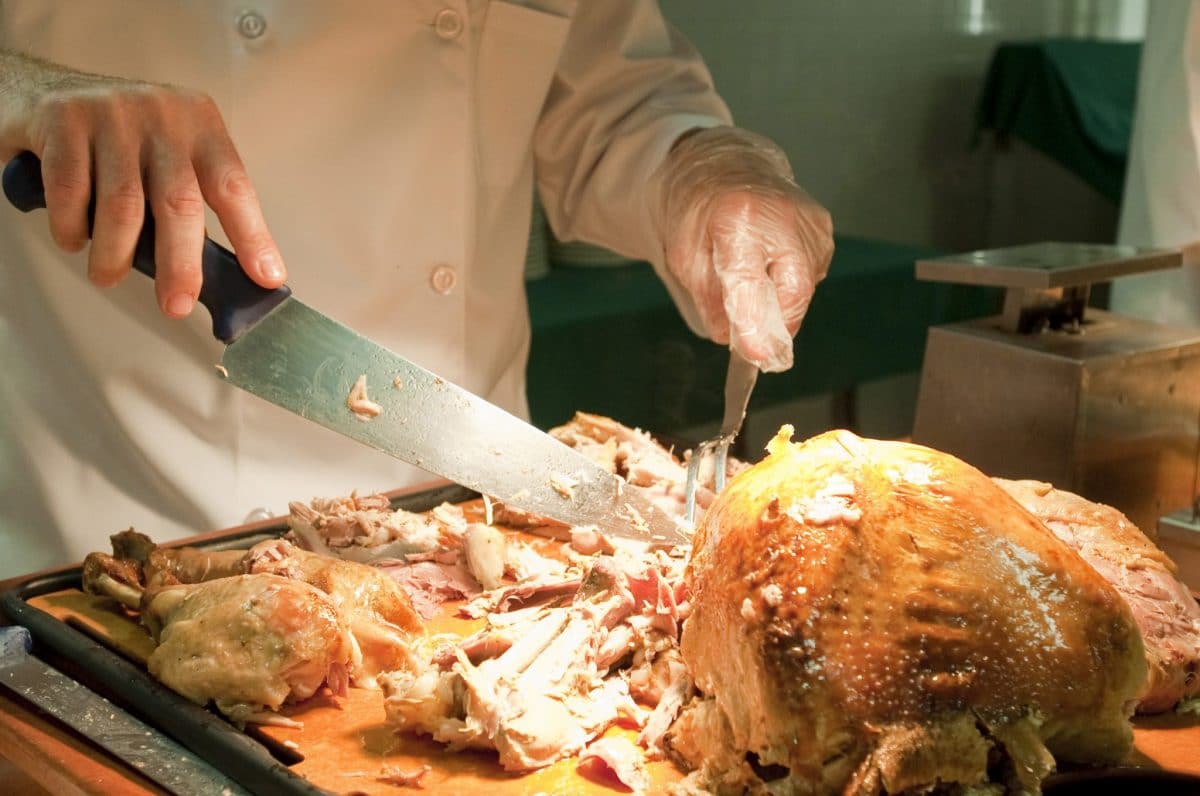
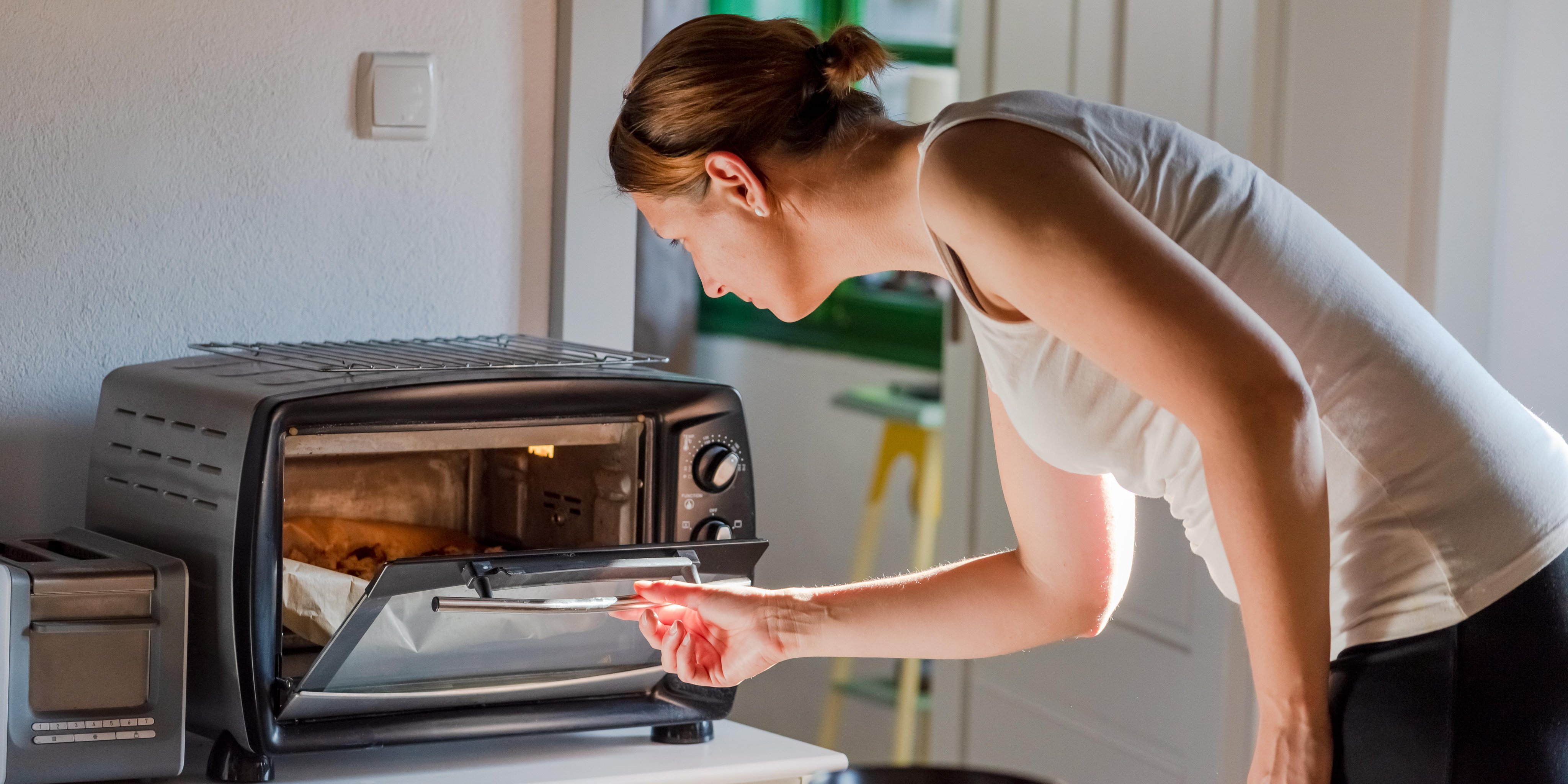


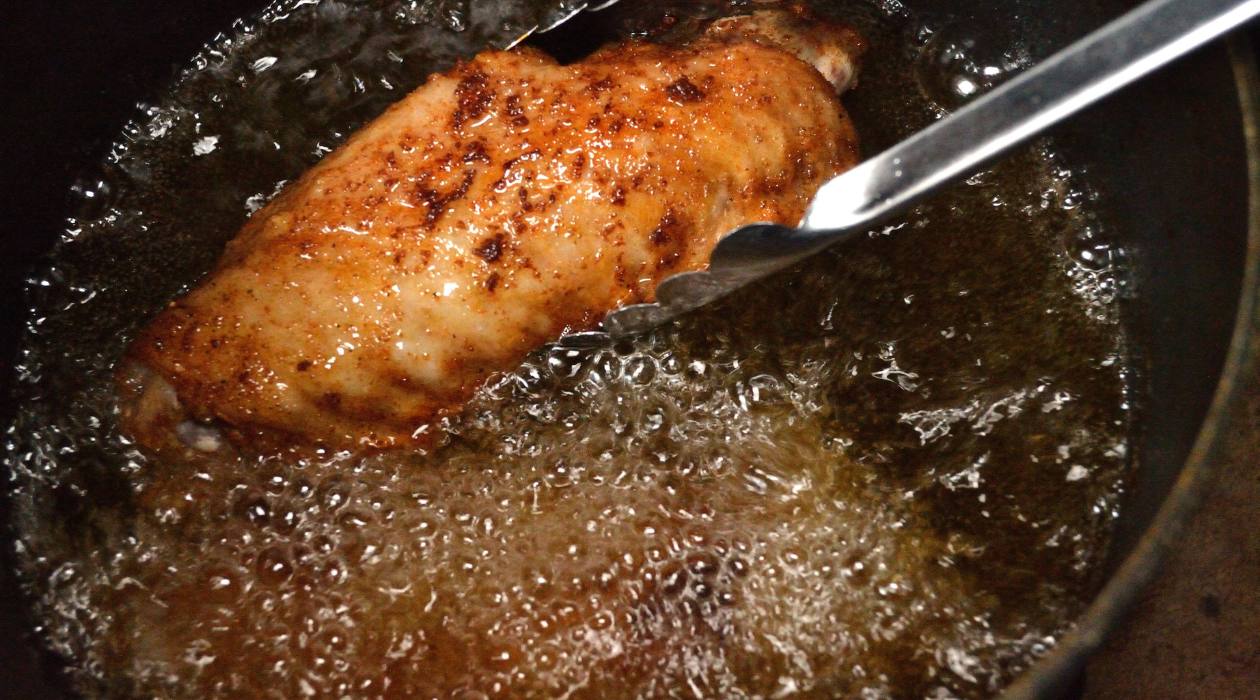
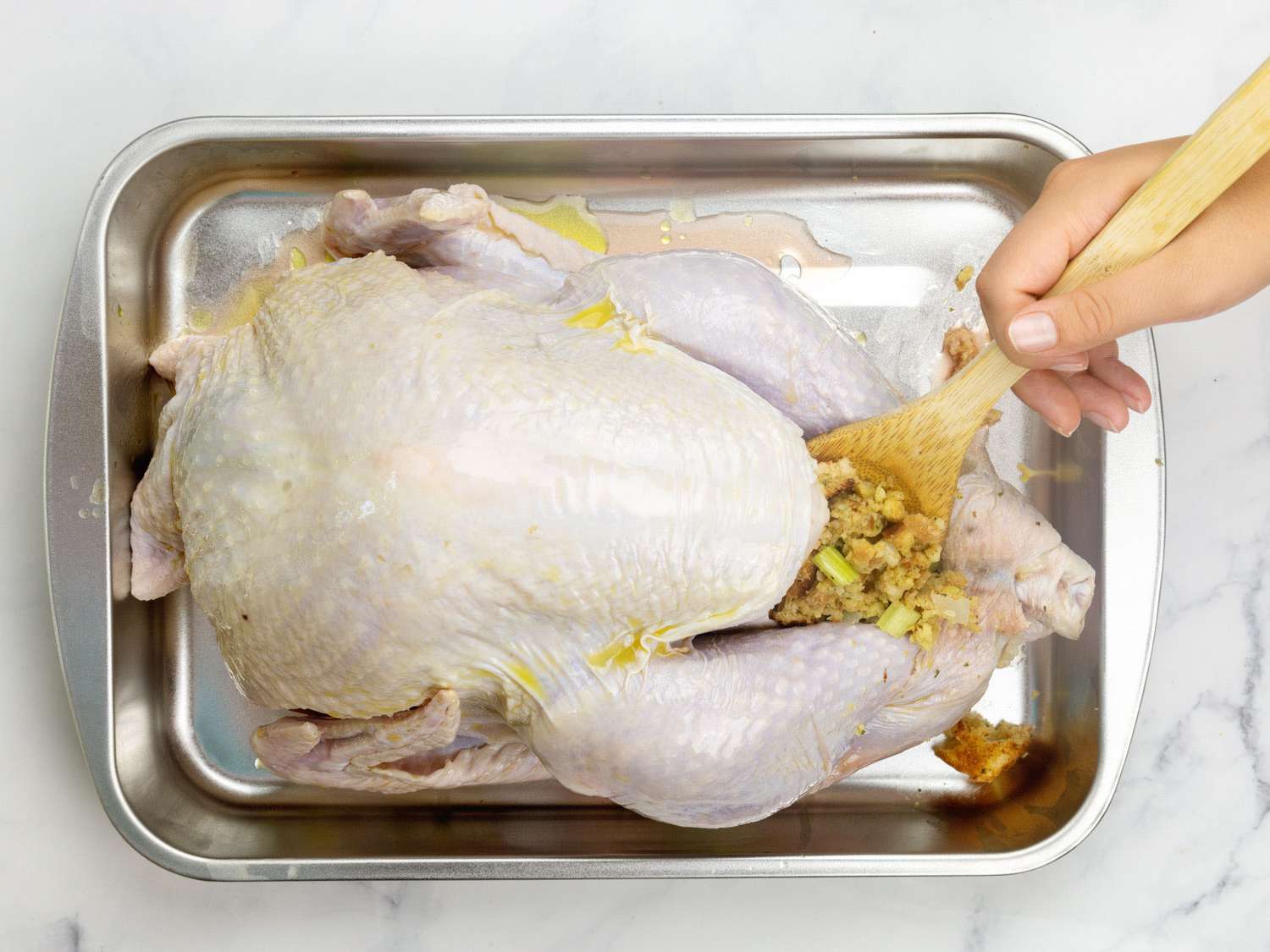
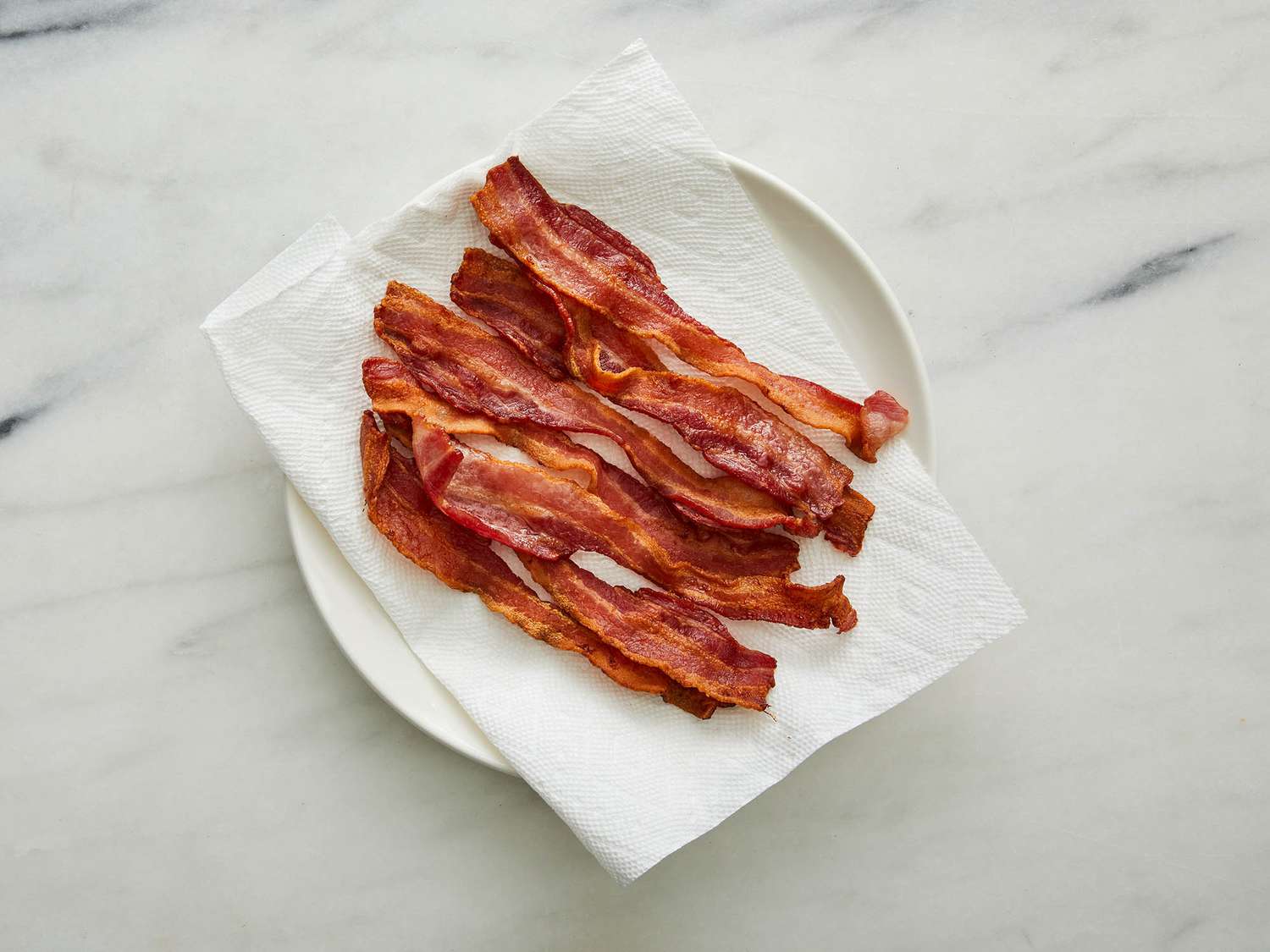

0 thoughts on “How To Store Turkey After It’S Cooked”